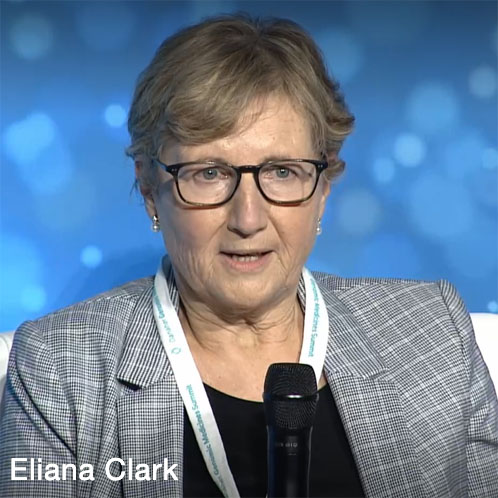However, ensuring that these treatments successfully reach the market will be far from straightforward. Cell and gene therapy (CGT) developers are facing myriad hurdles in research, drug delivery, manufacturing and more.
Sadik Kassim, Chief Technology Officer, Genomic Medicines, for the life sciences companies at Danaher Corporation, discusses how cross-industry collaborations formed early in the discovery process could be the key to overcoming those challenges.
In this article, he describes how biopharma developers can partner with industry and academic innovators to develop technology platforms that can be used to improve CGT processes across development pipelines.
Embracing predictive analytics
In the development of new CGTs, collaborations should start as early as possible and, ideally, in the early discovery phase. By working with technology innovators, researchers can develop analytical tools to predict what conditions will be required to manufacture a therapeutic, even before that compound has been designed.
Predictive modelling with machine learning, a form of artificial intelligence (AI), can be used to not only predict the behaviour and interactions of therapeutic candidates, but also the processes and equipment that would be needed to produce them at scale.

For Intellia Therapeutics, partnering with Danaher and other technology developers to analyse future manufacturing challenges has been key to the development of its in vivo and ex vivo gene-edited therapeutics.
“The criteria for us to nominate a candidate for development includes manufacturability,” said Eliana Clark, PhD, Executive Vice President and Chief Technical Officer of Intellia, during the Danaher Genomic Medicine Summit in Boston last December.
“In this space, you need really strong analytical tools,” she said, adding that “precompetitive collaboration is going to be very important” to developing AI tools to enhance R&D.
Collaborations can also help to speed up the development of new platform technologies to manufacture CGTs. Biopharma companies often wait until proof-of-concept has been established to develop those platforms, but there is merit in starting the process much earlier.
One advantage is that it can greatly accelerate the transition of novel compounds from clinical development to larger-scale production.
That’s why Intellia has formed several partnerships aimed at platform development. Clark said: “In my organisation, technical development is very much done in association with our research colleagues. If we need to develop a new platform, we start working early on … and I think that's what helps make that transition and those [manufacturing] processes more robust.”
One priority in CGT is the development of new vehicles to deliver therapeutic genes or gene editing to patients. This is another part of the process that is benefiting from collaborations.
For example, Intellia collaborated with Novartis to gain the rights to lipid nanoparticle technology that can be used for in vivo and ex vivo gene editing. This became the basis of a modular CRISPR/Cas9 delivery system that Intellia is developing.
Other innovators are forming collaborations in an effort to improve on CRISPR/Cas9 to deliver in vivo and ex vivo gene editing tools. Editas Medicine, working alongside Danaher life sciences company, Integrated DNA Technologies (IDT), developed an engineered AsCas12a nuclease variant to enable complex gene-edited applications by improving on-target specificity.

Technology developers can help biopharma companies to develop platforms around other core capabilities in genomic medicines, including viral vectors, guide RNAs and oligonucleotides. These partnerships can greatly accelerate development timelines.
Optimising manufacturing
As CGTs move closer to marketability, collaborations can help developers to optimise their manufacturing processes to boost yields while, at the same time, lowering costs.
Autologous cell therapies, made from individual patients’ cells, were estimated to cost $100,000 per dose at the dawn of CAR-T treatments in 2018.2 That’s because making personalised CAR-T treatments is a laborious, hands-on process.
Technology makers are finding new opportunities to automate manual processes in CAR-T manufacturing. Danaher life sciences company Cytiva partners with CAR-T makers to develop configurable manufacturing set-ups that are completely automated and can be adjusted to meet evolving production needs.
We are constantly searching for innovations that can improve this process even more. In March, Danaher partnered with the University of Pennsylvania to develop new technologies to overcoming production bottlenecks in the delivery of next-generation engineered cell therapies.
We believe innovations in manufacturing automation could ultimately bring down the cost of making autologous cell therapies to $20,000 a dose.
Inspiration from industries beyond biopharma promise to enhance CGT manufacturing even further. One example of a cross-industry collaboration is the Marcus Center for Therapeutic Cell Characterization and Manufacturing (MC3M) at Georgia Tech University, which was partially funded by Home Depot founder Bernie Marcus.
The centre is bringing together clinicians, industry researchers and engineers from a variety of disciplines to improve cell therapy manufacturing. Marcus’ idea was to adapt concepts that have worked in the construction industry — such as building codes and standards — to the engineering of gene and cell therapies.
It’s a prime example of a cross-industry consortium collaborating for the benefit of patients.
The innovations that emerge from collaborations — starting in discovery and extending through manufacturing — can only benefit the next generation of CGTs. For Intellia, the next generation includes engineered, off-the-shelf natural killer (NK) cell therapies to treat cancer. Last year, Intellia formed a partnership with ONK Therapeutics to develop up to five allogeneic CRISPR-edited NK cell therapies.
As the field expands from autologous to allogeneic cell therapies, collaborations aimed at optimising development and manufacturing become even more important.
To paraphrase Clark, the potential is enormous, but we risk developing really sophisticated editing technologies that are difficult to implement in a manufacturing environment. So, part of the conversation with our collaborators is to ask: how do we simplify?
References
- https://asgct.org/global/documents/asgct_citeline-q4-2022-report_final.aspx.
- https://bioprocessintl.com/manufacturing/cell-therapies/analysis-cost-of-cell-therapy-manufacturing-autologous-cell-therapies-part-1/.
